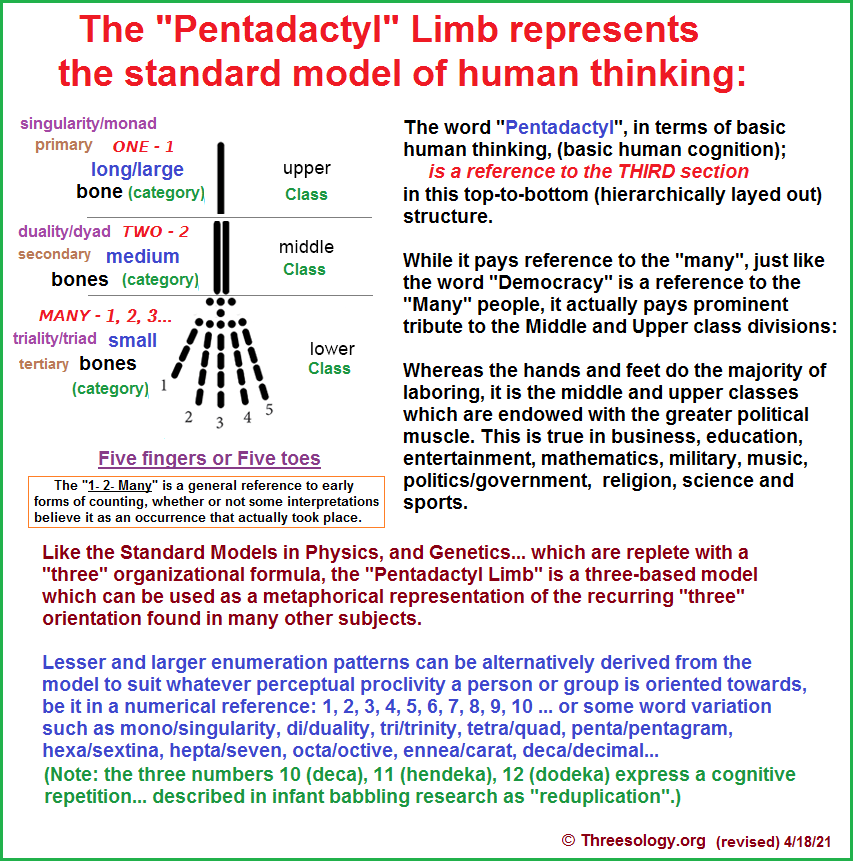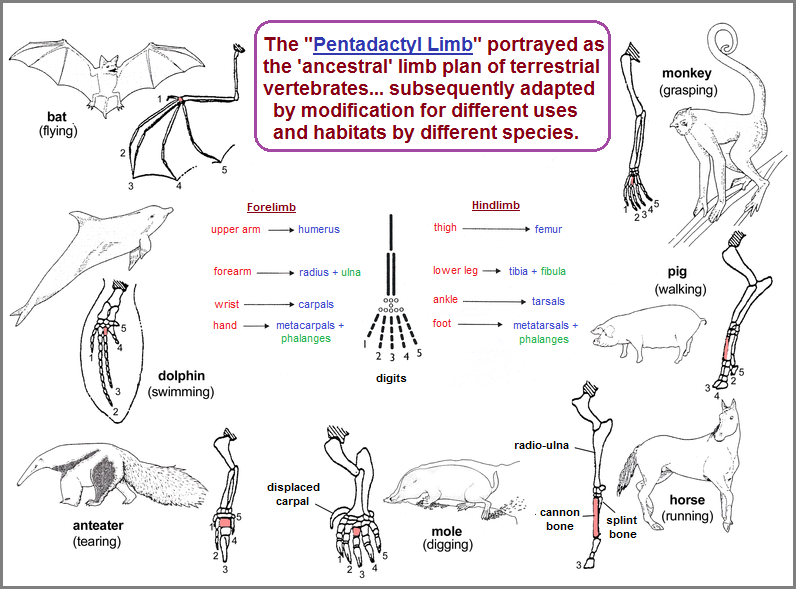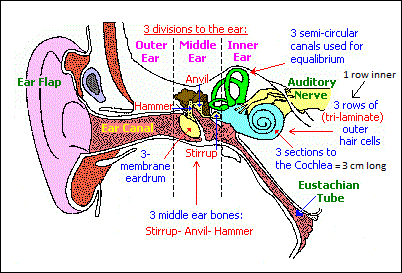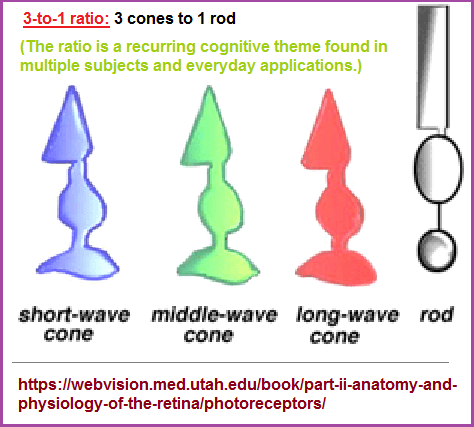page 1e
Progressive Thinkers as of 5/8/2020
|
| ||||||||||||||||||||||||||||||||||||||||||||||||||||||||||||||||||||||||||||||||||||||||||||||||||||||||||||||||||||||||||||||||||||||||||||||||||||||


With so very many "threes" being pulled out of different minds, one might want to consider that humanity is being subjected to the environment of a casino in which the collective is engaged in playing one or another game having some system of three; all of whom are waiting for some hoped for big "payout". Whereas we find those who switch between games (subjects), or between slot machines (specific ideas) in an effort to improve their chances of discovering a "big win" (for which they might earn the Nobel prize), far too many get convinced like a lottery player that if they stick with the same number(s) or types of scratch tickets, they will eventually win... because in losing they somehow equate this with having paid some person dues. Many a scientist and other professional persist in what they do because they too get into a habit of "doubling" or "tripling," etc., down if they do not realize that which is expected to be won, even if the winning is not accurately defined. They await something that might well be measured of great value simply because others in a person's social circumstances come to define something of being great value but it actually has nothing of value beyond a mere belief status.
While different translations of a seemingly "coded" message may facilitate a clearer understanding of a supposed message being conveyed, the attempted translations may create more confusion because they are wrong. This "wrongness" has been addressed over and over again, with a good example having come from Francis Bacon with respect to his "idols of the mind". And yet, he offered no means of addressing the issue such as removing humanity from its presence on Earth, the Solar system and the galaxy. If not the recurrence of patterns-of-three in many subjects, then the overall conservation of enumerated patterns being used despite the fact that number patterns are seemingly infinitely available for use. And although Bacon spoke of four types of idols, a three-to-one distinction is quite evident:
In the first book of Novum Organum Bacon discusses the causes of human error in the pursuit of knowledge. Aristotle had discussed logical fallacies, commonly found in human reasoning, but Bacon was original in looking behind the forms of reasoning to underlying psychological causes. He invented the metaphor of "idol" to refer to such causes of human error.
Bacon distinguishes four idols, or main varieties of proneness to error.
- The idols of the tribe are certain intellectual faults that are universal to mankind, or, at any rate, very common.
- One, for example, is a tendency toward over-simplification, that is, toward supposing, for the sake of tidiness, that there exists more order in a field of inquiry than there actually is.
- Another is a propensity to be overly influenced by particularly sudden or exciting occurrences that are in fact unrepresentative.
- The idols of the cave are the intellectual peculiarities of individuals. One person may concentrate on the likenesses, another on the differences, between things. One may fasten on detail, another on the totality.
- The idols of the marketplace are the kinds of error for which language is responsible. It has always been a distinguishing feature of English philosophy to emphasize the unreliable nature of language, which is seen, nominalistically, as a human improvisation. Nominalists argue that even if the power of speech is given by God, it was Adam who named the beasts and thereby gave that power its concrete realization. But language, like other human achievements, partakes of human imperfections. Bacon was particularly concerned with the superficiality of distinctions drawn in everyday language, by which things fundamentally different are classed together (whales and fishes as fish, for example) and things fundamentally similar are distinguished (ice, water, and steam). But he was also concerned, like later critics of language, with the capacity of words to embroil men in the discussion of the meaningless (as, for example, in discussions of the deity Fortune). This aspect of Bacon's thought has been almost as influential as his account of natural knowledge, inspiring a long tradition of skeptical rationalism, from the Enlightenment to Comtian positivism of the 19th and logical positivism of the 20th centuries.
- The fourth and final group of idols is that of the idols of the theatre, that is to say mistaken systems of philosophy in the broadest, Baconian sense of the term, in which it embraces all beliefs of any degree of generality. Bacon's critical polemic in discussing the idols of the theatre is lively but not very penetrating philosophically. He speaks, for example, of the vain affectations of the humanists, but they were not a very apt subject for his criticism. Humanists were really anti-philosophers who not unreasonably turned their attention to non-philosophical matters because of the apparent inability of philosophers to arrive at conclusions that were either generally agreed upon or useful. Bacon does have something to say about the skeptical philosophy to which humanists appealed when they felt the need for it. Insofar as skepticism involves doubts about deductive reasoning, he has no quarrel with it. Insofar as it is applied not to reason but to the ability of the senses to supply the reason with reliable premises to work from, he brushes it aside too easily.
Book II of the Advancement of Learning and Books II to IX of the De Augmentis Scientiarum contain an unprecedentedly thorough and detailed systematization of the whole range of human knowledge. Bacon begins with a distinction of three faculties:
- Memory (history): History has an inclusive sense and means all knowledge of singular, individual matters of fact.
- Imagination (poesy): "poesy" is "feigned history" and not taken to be cognitive at all and so really irrelevant. After subdividing poesy perfunctorily into narrative, representative (or dramatic), and allusive (or parabolically) forms, Bacon gives it no further consideration.
- Reason (philosophy): Bacon acknowledges something he calls first philosophy, which is secular but not confined to nature or to society. It is concerned with the principles, such as they are, that are common to all the sciences. Natural philosophy divides into natural science as theory on the one hand and the practical discipline of applying natural science's findings to "the relief of man's estate" on the other, which he misleadingly describes as natural magic. The former is "the inquisition of causes," the latter, "the production of effects."
(H.O.B. note: the article has a great deal more information than the small amount being provided. I am merely sketching some patterns-of-three:)
- In England three systems of thought prevailed in the late 16th century: Aristotelian Scholasticism, scholarly and aesthetic humanism, and occultism.
Anthony M. Quinton, Baron Quinton: Chairman, British Library Board, 1985-90. President, Trinity College, Oxford, 1978-87; Lecturer in Philosophy, University of Oxford, 1950-78. Author of The Nature of Things.
"Bacon, Francis, Viscount Saint Alban (or Albans), Baron Verulam ." Encyclopædia Britannica Ultimate Reference Suite, 2013. (Britannica.com: Francis Bacon)
One might also reference the SCM as a type of concoction, conglomeration, ensemble, cell, or cocktail... to give but a handful of metaphors that a person might venture to creatively think in terms of. Many, either apparently disparate or seemingly similar groups-of-three are found in a variety of contexts, thus suggesting that the basic "three" configuration has some necessary value for human thinking processes or is at the very least, an often used formula by which perceptions are amalgamated. It is not that we aren't able to see and use other patterns as well, the fact that when we put all the recurring patterns together and find that we humans only use a small assortment over and over and over again, tells us that we are either being encouraged or forced to do so, or it is a habit that we need to come to terms with and identify whether it is an established asset or hindrance to our desired progress.
With respect to the idea of a "cocktail" of ideas (or expressions such as writing systems, art forms, music exhibitions, etc.) representing a language and a cocktail of languages representing an idea, the inter-change and exchange of these different concepts might be understood from at least one vantage point, if I use an example using a life and death situation. Such an example is found in the usage of three drugs as a lethal injection to carry out the execution of a condemned prisoner. Each of the drugs is a different language so-to-speak, in the sense that they perform different functions on human physiology:

During a lethal injection procedure, an inmate is strapped to a gurney, a padded stretcher normally used for transporting hospital patients. The typical lethal injection consists of three chemicals that an executioner injects into a viable part of the inmate's body (usually the arms) in the following order:
If all goes as planned, the entire execution takes about five minutes, with death usually occurring less than two minutes after the final injection. However, botched lethal injection executions have sometimes required more than an hour to achieve death. Deborah W. Denno: Professor of Law, Fordham University, New York. Author of Biology and Violence: From Birth to Adulthood."lethal injection." Encyclopædia Britannica Ultimate Reference Suite, 2013. ( Britannica.com: Lethal Injection) |
With respect to law in the U.S., one might frequently encounter the notion about a court room occurrence in which a witness that is about to be questioned is sworn in under the three-patterned provision of "Tell the Truth- The Whole Truth- Nothing But The Truth". If this is not to be interpreted as a three- patterned embellishment of a singular idea, then one must philosophically consider that each statement concerns the occasion of "Truth" being represented by three different languages with the same type of writing script. Otherwise we might be inclined to interpret it as a hold-over behavior from infancy in that babies often resort to the usage of "reduplcations"... that is, sequential reiteration of the same sounds. Other reiterations found in law frequently rely on two-patterned fixations (called legal doublets) such as "cease and desist". (Other examples can be found on this page: Embellished dichotomies page 1). The fact that the human brain appears to reassuringly resort to the adoption of a three-patterned language description may mean that there are either three separate brains working as one, three types of vantage points being addressed into some attempted consolidation, or... as another example of explanation, three language variations are simultaneously being conveyed within the scope of an individual's ability to express themselves. If they have lived a life in which their foremost language of expression has been a single subject, no doubt the "threeness" (whatever it actually is in terms of human accommodation and usage); they will then attempt to use a single subject's vocabulary (within the range of its limitations), to convey three different perceptions or three different vantage points or three different interpretations of an impression. However, this does not preclude the exclusion of thinking that the human brain may use a type of three-patterned mechanism by which stimulus events are received.
What I am thinking of at the moment is the brain effecting some flip-flopping of environmental cues in an exercise similar to the eyes inverting images on the brain denoted as vision. If the brain is a filtering mechanism, it may of a three-slit variety, instead of a two-slit structure used by those in the field of physics to try and fashion some understanding of whether atomic nuclei are particles or waves. The human brain may be "splitting" perceptions into a group-of-three on multiple occasions, thus rendering the usage of a three-patterned ensemble of expression. This possibility not only arises if we include the concept of the Triune brain, but the fact that our eyes uses a trichromatic {three-color system} along with the 3 cones and 1 rod 3-to-1 ratio pattern; including the cornea being responsible for about two-thirds of the eye's optical power, and the lens provides the remaining one-third.
However, from the Wikipedia and other sources we find that There are currently three known types of photoreceptor cells in mammalian eyes:
- Rods
- Cones
- Intrinsically photosensitive retinal ganglion cells.
The two classic photoreceptor cells are rods and cones, each contributing information used by the visual system to form a representation of the visual world, sight. The rods are narrower than the cones and distributed differently across the retina, but the chemical process in each that supports photo-transduction is similar. A third class of mammalian photoreceptor cell was discovered during the 1990s: the intrinsically photosensitive retinal ganglion cells. These cells do not contribute to sight directly, but are thought to support circadian rhythms and pupillary reflex."
One must wonder if the human brain "occasionally" exhibits a primitive state of development and exercises an unrecognized perception of reality similar to the eyes of insects, thus revealing the presence of "blurred, shadowy, imprecise, hinting", vague, echoing", etc. shadows of impression which may at times influence thought:
The main eyes of many insect larvae consist of a small number of ocelli, each with a single cornea. The main organs of sight of most insects as adults are the compound eyes, but flying insects also have three simple dorsal ocelli. These are generally under-focused, giving blurred images; their function is to monitor the zenith and the horizon, supplying a rapid reaction system for maintaining level flight. (Britannica: "photo-reception.")
If not the usage of similar visual mechanisms found in insects, then perhaps we might consider the human brain occasionally resorting to some exercise of perception akin to those "lower" light forms which inhabit a nocturnal or dim light existence, particularly when it is noted that many have referred to fellow humans as having a "dimly lit" brain:
Crepuscular (active at twilight) and nocturnal insects (e.g., moths), as well as many crustaceans from the dim midwater regions of the ocean, have compound eyes known as superposition eyes, which are fundamentally different from the apposition type. In superposition eyes the number of facets that contribute to the production of a single image depends on the type of optical mechanism involved. There are three general mechanisms:
- Based on lenses (refracting superposition).
- Mirrors (reflecting superposition).
- Lens-mirror combinations (parabolic superposition).
Britannica: "photoreception." 2013, Ultimate Reference Suite. (Britannica.com: Photoreception)
In addition to these short references concerning the eye, let me make reference to the ear having its own assortment of three-patterned mechanisms which provide a three-patterned filtered "translation" of the environment before it reaches the brain. It should be noted that some of those who claim themselves to be an expert in linguistics do not typically include a discussion of or even a reference to audiology, though the role of hearing has a great impact on speech an one's overall language ability in many commonplace respects. In other words, neither do they recognize the recurrence of threes in the study of language or hearing, much less make a third referencing effort to three-patterned cognitive organizations.

|
3-Patterned Ear Structure | |
| 3 overall divisions: | Outer ear~ Inner ear~ Middle ear |
| 3 middle ear divisions: | Tympanum~ Epitympanum~ Mastoid antrum |
| 3 eardrum membranes: | Cutaneum~ Collagen fibers~ Mucosm |
| 3 semi-circular canals: | Used for balance (equilibrium) |
| 3 bones: | (ossicular chain) Incus~ Stapes~ Malleus |
| 3 main malleus ligaments: | Anterior~ Lateral~ Superior |
| 3 incus anchorage points: | Malleus~ Stapes~ Bony fossa wall |
| 3 cochlea sections: | (Scala) Vestibuli~ Tympani~ Cochlear duct |
| 3 extrinsic muscles (Auricularis): | Anterior~ Superior~ Posterior |
| 3 sound conduction paths: | Electrical~ Mechanical~ Fluid or: Bone (solid)~ Air (gas)~ Fluid (liquid) |
| 3 nerve stimulation paths: | Mechanical~ Chemical~ Electrical |
| 3 outer hair cell rows | typical in mammals but some sources give 3, 4, or 5 |
| Neurotrophin-3 (NT-3) is synthesized by inner and outer hair cells of the developing organ of Corti. | Brain-derived neurotrophic factor (BDNF) is also synthesized. (Prestin is the motor protein of the outer hair cells.) |
| 3 sound qualities: | Pitch~ Volume (intensity)~ Tone |
| 3 sound wave propagation processes: | Diffraction~ Transmission~ Reflection |
| 3 main forms of ossicular chain fixation: | Fluid~ Mechanical~ Otosclerosis |
| 3 classes of ossicular lever action: | Force arm~ Resistance arm~ Fulcrum |
| 3 acoustic distortion forms: | Frequency~ Phase~ Amplitude |
| 3 basic properties of vibrating bodies: | Inertia~ Elasticity~ Dissipation |
| 3 principal types of deafness: | Conduction~ Nerve~Stimulation |
| 3 types of hearing loss: | Conductive~ Sensorineural~ Mixed |
| 3 (inner ear) organs of balance: | Semicircular canals~ Utricle~ Saccule (collectively called the vestibular organ, which can be referred to as a {3-in-1} ratio.) |
Language 3's page 1
Date of (series) Origination: Saturday, 14th March 2020... 6:11 AM
Date of (this page's) Initial Posting: Monday, 24th January 2022... 11:10 AM

